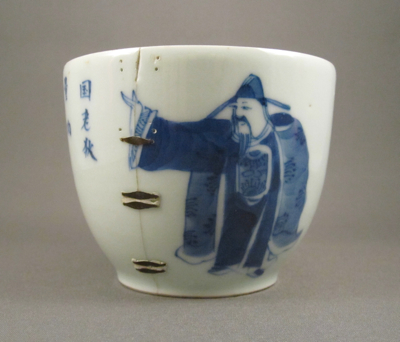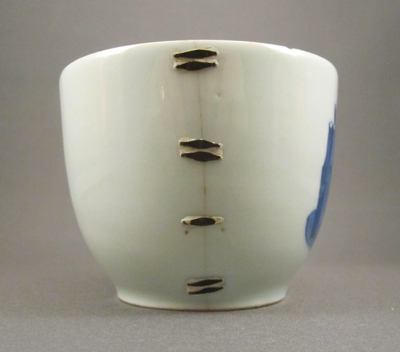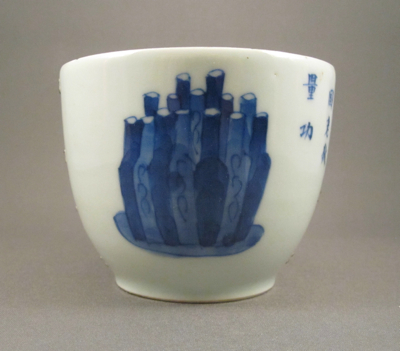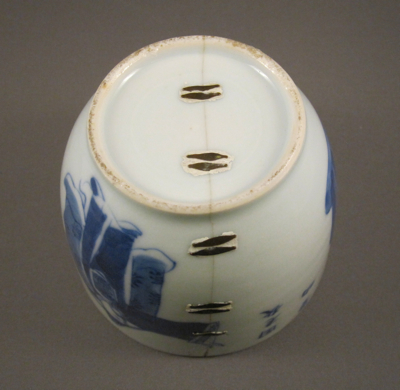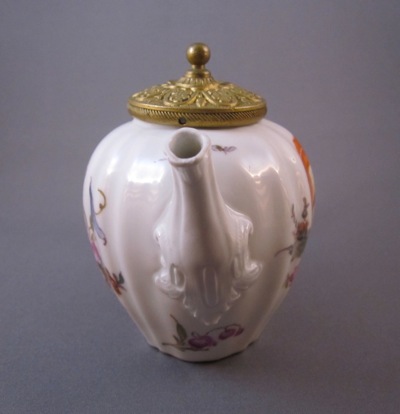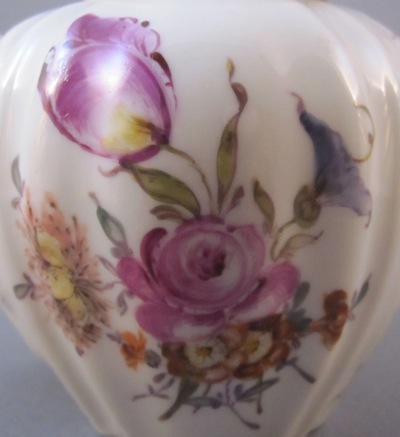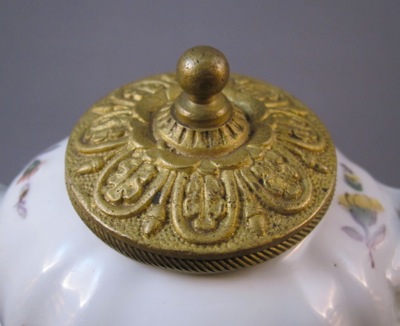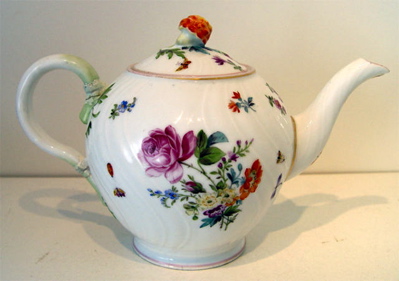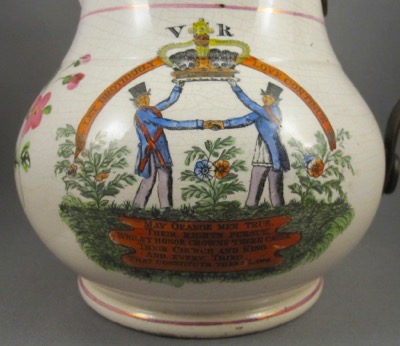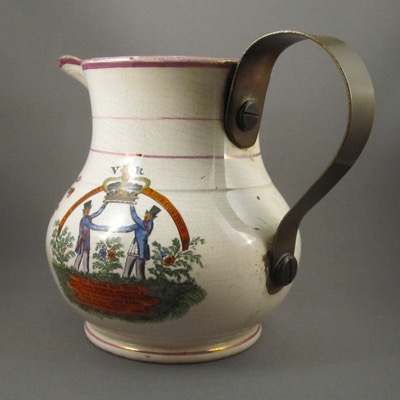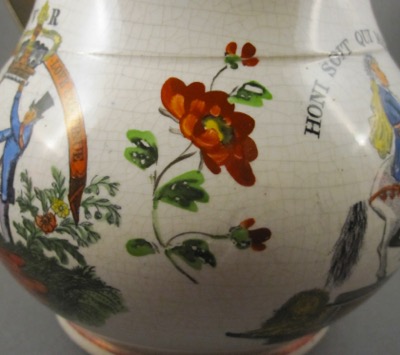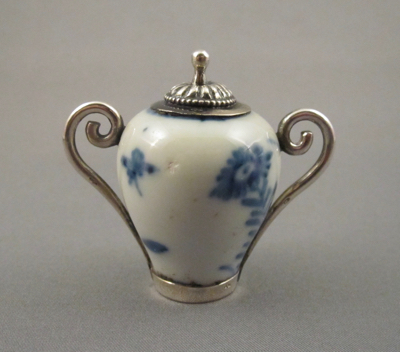This Chinese porcelain cup is decorated in cobalt blue with a Peerless Hero figure, stacked bottles and calligraphy taken from Wu Shuang Pu (Table of Peerless Heroes), a late 17th century book of woodcut prints by Jin Guliang. The cup measures 2-3/4 inches high, with an opening diameter of 3-1/2 inches.
After the cup broke in half, over 100 years ago, it was repaired with pairs of metal staples set in cement. Judging from the flattened lozenge-shaped staples made from repurposed wire, this repair was most likely done in the Middle East where itinerant china menders set up shop directly in the streets. But even with the doubled up staples and binding cement, more than a few staples have jumped ship, leaving just tiny empty holes as a reminder of its time in the china mender’s hands.
